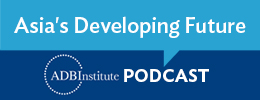 2024 marked a sobering milestone as the warmest year in global temperature records dating back to 1850, becoming the first calendar year to exceed 1.5°C above pre-industrial levels. This alarming trend continues, with each of the 10 years from 2015 to 2024 ranking among the 10 warmest on record.
2024 marked a sobering milestone as the warmest year in global temperature records dating back to 1850, becoming the first calendar year to exceed 1.5°C above pre-industrial levels. This alarming trend continues, with each of the 10 years from 2015 to 2024 ranking among the 10 warmest on record.
The Silent Killer
Extreme heat is often called the “silent killer” for good reason. With 489,000 heat-related deaths occurring annually between 2000 and 2019, its impact dwarfs more visible weather hazards, even with significant underreporting. As climate change accelerates, these numbers will only grow without coordinated action.
Heat claims more lives globally than any other climate-driven disaster, extending its impacts beyond direct mortality. It exacerbates vector-borne diseases like malaria and dengue, as well as non-communicable diseases like heart conditions. Excessive heat reduces the nutritional content of cereal grains and lowers livestock productivity, affecting food security and nutrition. Over 70% of the global workforce is at risk from severe heat, with poor informal outdoor workers facing the highest risks.
The H.E.A.T. Framework: A Comprehensive Response
In February 2025, the Asian Development Bank (ADB) brought together diverse stakeholders at the Rockefeller Foundation’s Bellagio Center in Italy to address this pressing challenge. The resulting H.E.A.T. Framework offers a structured, human-centered approach with four key pillars:
- Health sector adaptation strategies for strengthening healthcare capacity, medical education, community-based action, and emergency response systems to better address heat-related illnesses.
- Enablers that facilitate identifying needs and deploying solutions for establishing early warning systems, promoting equity-driven policies, and securing sustainable financing for heat and health measures.
- Architectonics to adapt the built environment by integrating heat-health considerations into urban planning and infrastructure design and promoting nature-based solutions like urban cooling through green spaces.
- Technologies and tools to identify risks and provide protective solutions for leveraging artificial intelligence, integrating climate and health data, and developing smart health supply chains to enhance preparedness and response.
What makes this approach compelling is its emphasis on human-centered design. The framework is built around people’s needs, bringing together human, digital, and physical solutions within a comprehensive system.
Vulnerability and Equity at the Center
Analysis conducted during the convening revealed critical gaps in the current understanding of heat’s impacts on vulnerable populations. While we know vulnerable communities bear a disproportionate burden, our knowledge has significant blind spots across several dimensions.
Direct Health Effects of Heat
Heat has varied effects across different life stages, and we are yet to fully understand long-term biological adaptations to heat, especially when combined with factors like air pollution. Equally concerning is our limited understanding of how chronic heat stress interacts with comorbidities and medications—a critical gap as populations age and chronic disease burdens increase.
Strain on Health Systems
Heat causes significant strain on health systems, affecting communities, health workers, infrastructure, and resources. The extent of insufficient awareness, recognition, preparedness, response coordination, and resource constraints remains largely unknown. The impact of coexisting public health emergencies or long-term effects of heat exposure on health systems and health workers is beyond anticipation at the current levels of evidence.
Gaps in Surveillance
Current heat surveillance systems do not provide adequate insights into future heat risk. The dynamic conditions of vulnerability and how to integrate existing information sources are gaps that must be bridged. The potential of artificial intelligence and other technologies to understand and communicate risks needs to be further explored for effective risk communication and advanced warnings.
Access and Equity Issues
Vulnerable communities (such as mother-child dyads and older people) and settings (such as laborers, gig workers, and contractual outdoor workers) are disproportionately affected by extreme heat. Perhaps most striking is the recognition that we have barely begun to anticipate how climate migration will reshape vulnerability patterns. As heat makes certain regions increasingly uninhabitable, unprepared health systems could face unprecedented strains from population movements that are difficult to predict.
Scaling up heat health warning systems could save 98,000 lives annually, while occupational safety measures could save billions in medical costs and lost productivity.
Implementing the Path Forward
To operationalize the H.E.A.T. Framework, stakeholders identified five key action areas:
- Driving public awareness and community action by launching advocacy campaigns and behavioral change initiatives to promote heat resilience at all levels.
- Mainstreaming the framework into national and regional policies through collaboration with governments to integrate heat resilience into health action plans across all government levels.
- Supporting implementation by designing and implementing recommended interventions, including their rapid scale-up in the most vulnerable regions.
- Mobilizing resources and investments by engaging ADB and other development banks, climate funds, philanthropies, civil society organizations, and the private sector to finance and scale heat-health measures, innovations, and technologies.
- Establishing monitoring and accountability mechanisms to create frameworks to track implementation progress and impact.
Breaking Down Silos
Effective heat response requires breaking down traditional silos. A “Health in All Policies” approach represents a vital path forward, recognizing that heat stress affects not just public health but education (with 80 million students impacted by heat-related school closures in 2024), labor productivity (with 80 million full-time jobs projected to be lost due to heat stress by 2030), and food security (with significant food loss due to heat and lack of refrigeration).
With Asia particularly vulnerable (India, Indonesia, the Philippines, Pakistan, Bangladesh, and Thailand ranking among the most affected countries), regional coordination is essential. ADB’s commitment to investing in strengthening measures addressing climate-vulnerable diseases demonstrates the financial commitment needed. However, as discussions have revealed, financing must be paired with comprehensive policy approaches integrating heat considerations across all sectors.
The H.E.A.T. Framework will help operationalize the Heat Risk Governance Framework of the World Health Organization/World Meteorological Organization by translating global policy recommendations into targeted, country-specific, region-responsive, and health sector-focused interventions. It aligns with calls for data-driven decision-making, equitable access to cooling solutions, and innovative financial mechanisms to support climate adaptation.
As we move forward, the challenge lies in translating this framework into actionable policies and investments that protect the most vulnerable while building resilience across our health systems and communities.








No comments yet.